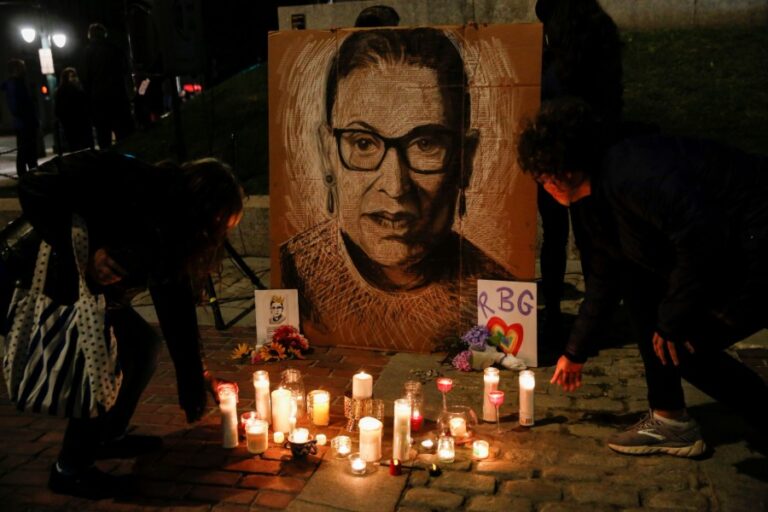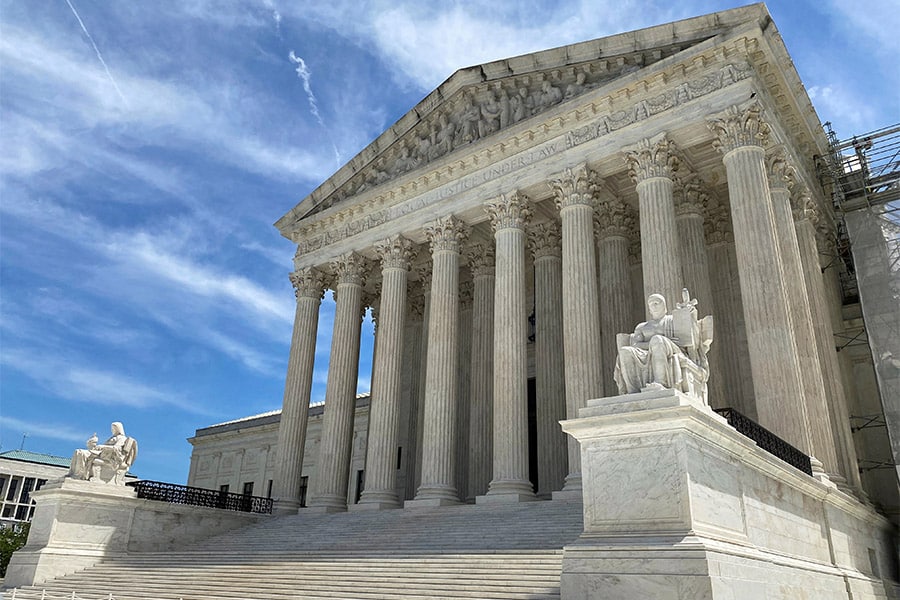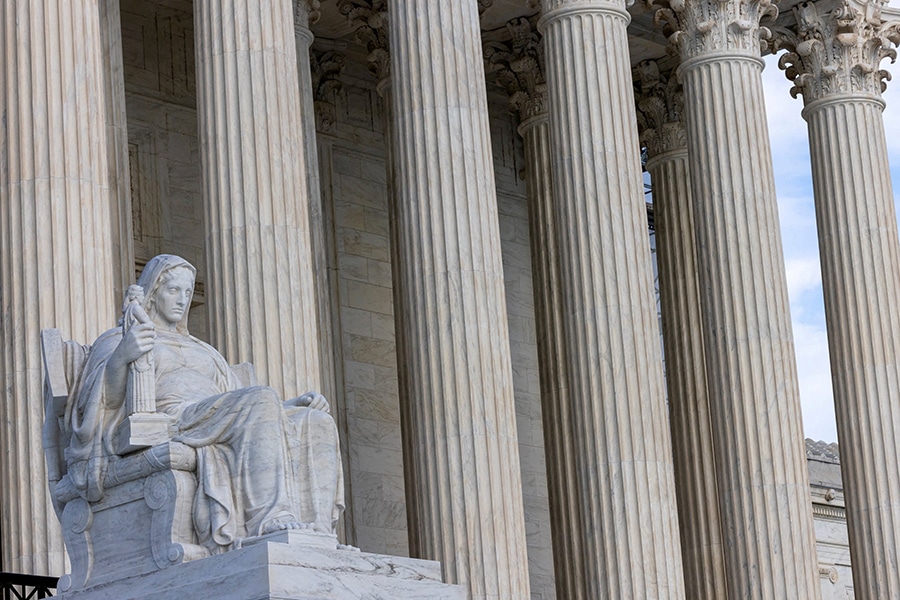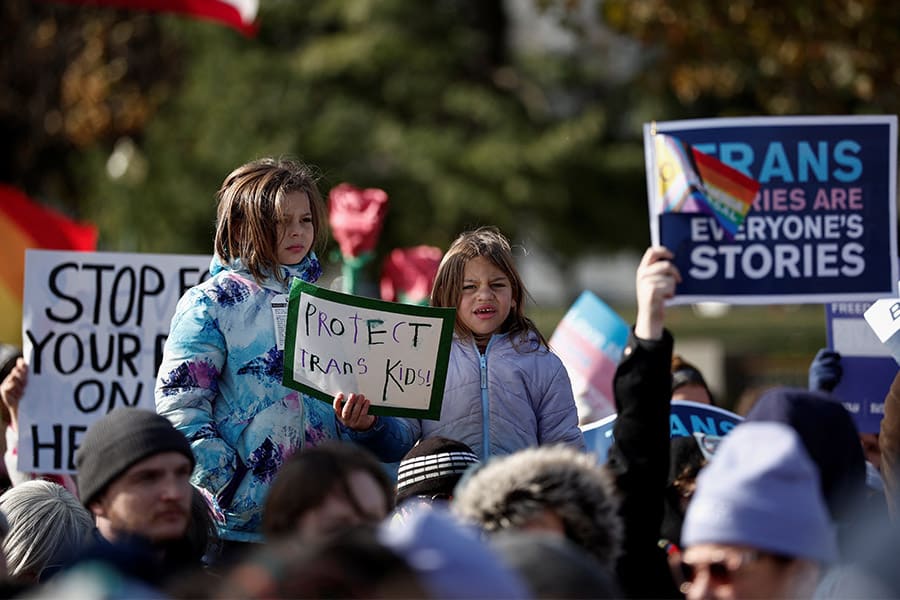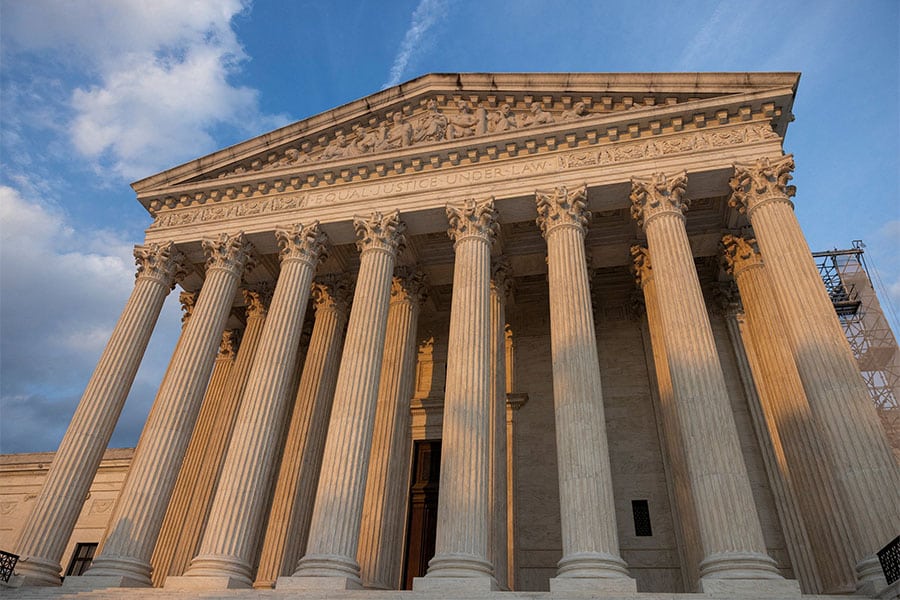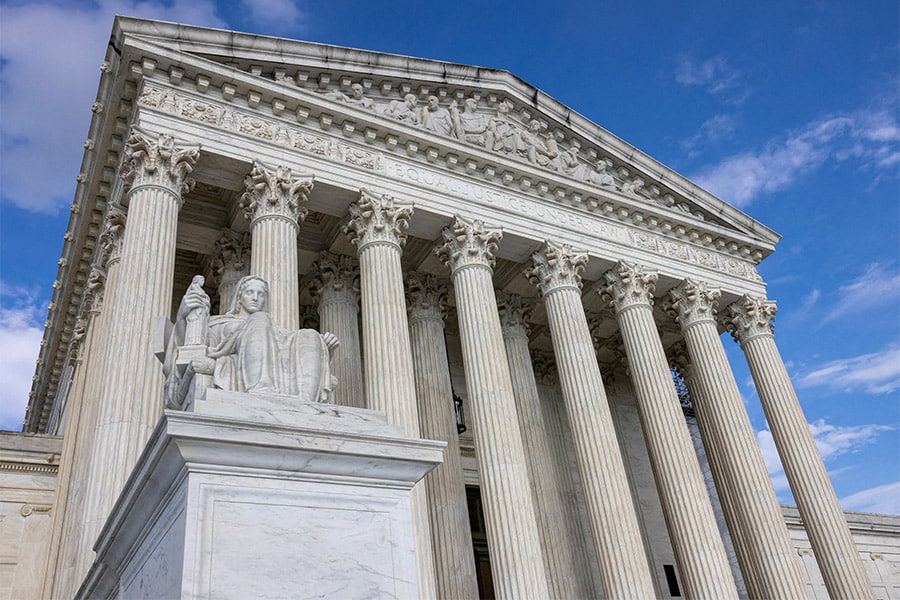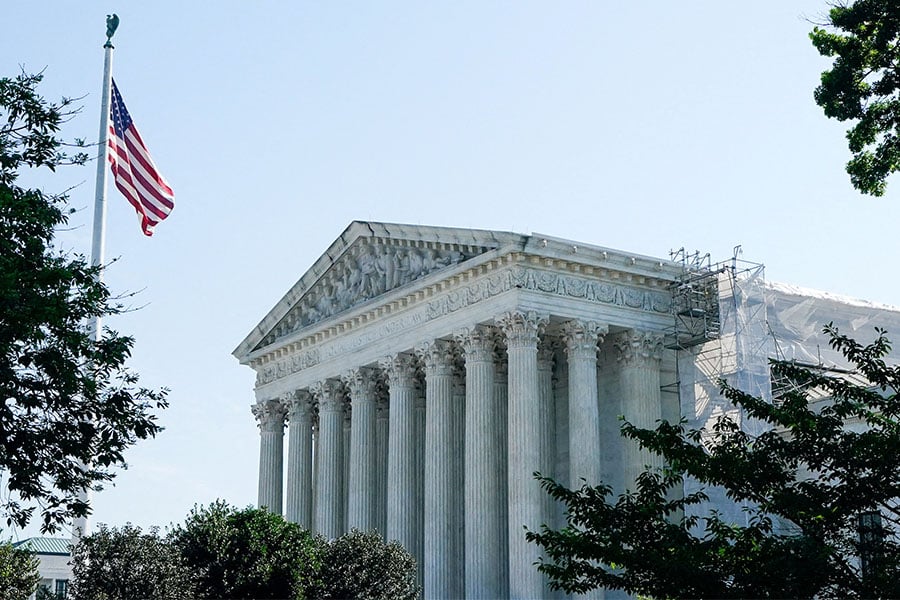MIAMI (CNS) — Given her prolific output of written opinions both before and after joining the U.S. Supreme Court, the late Justice Ruth Bader Ginsburg left a long legacy of legal thought and analysis for future generations to parse.
For many, the abortion debate will loom large in her record. Even before being nominated to the Supreme Court by then-President Bill Clinton in 1993, then-Judge Ginsburg had voiced misgivings in her reading of the Supreme Court’s decision-making in 1973’s Roe v. Wade, which legalized abortion virtually on demand in this country.
But the justice’s steady, incremental support for the expansion of a so-called “right” to abortion during the course of her term on the Supreme Court was the subject of both celebration and scorn on the issue.
Ginsburg consistently supported women having a right to abortion across numerous cases brought before the court and was in general a vocal advocate on the bench for women’s rights, according to Jesuit Father Bill McCormick, a political science research fellow at St. Louis University and a contributing editor to America magazine.
A right to abortion was front and center in this year’s June Medical Services ruling, involving a Louisiana law that required abortion doctors to have admitting privileges at a hospital within 30 miles of the clinic where the doctor does abortions. The court ruled 5-4 that the law was unconstitutional, with Ginsburg in the majority.
“Ginsburg famously criticized the landmark 1973 case Roe v. Wade … for making abortion a judicial question and for deciding the question on the grounds of privacy rather than ‘the rights of women,'” Father McCormick told Catholic News Service.
Although Roe v. Wade is best known for catalyzing the pro-life movement, Father McCormick added, “Ginsburg thought that Roe ‘stopped the momentum’ of a women’s rights movement that she thought would have more widespread and permanent legislative impact.”
Ginsburg, who died of metastatic pancreatic cancer Sept. 18 at 87, had been a litigator and director of the Women’s Rights Project of the American Civil Liberties Union during the 1970s. She also was the first tenured female professor at Columbia Law School before moving on to the U. S. Court of Appeals for District of Columbia Circuit and then the Supreme Court.
After the 2010 retirement of Justice John Paul Stevens, Ginsburg was the senior member of a four-justice liberal cohort, consisting of the three female justices — her, Elena Kagan (who succeeded Stevens) and Sonia Sotomayor — and Justice Stephen G. Breyer.
Richard Garnett, a professor of law and political science at the University of Notre Dame and director of the Notre Dame Program on Church, State & Society, notes Ginsburg suggested the changes imposed in the Roe v. Wade case had been too quick, dramatic and sweeping — and that she believed incremental movements might have been better for the nation’s politics.
“She also expressed doubts on at least one occasion about the ‘privacy’ rationale of Roe — her view was that abortion rights were better understood in terms of equality,” Garnett told CNS.
“She very consistently ruled against regulations of abortion, including regulations that the court upheld and that most Americans support, including the federal law banning partial-birth abortions. In her view, the Constitution permits very few, if any, measures that regulate abortion in order to vindicate the life and dignity of the unborn child,” said Garnett.
He clerked for the late Chief Justice William Rehnquist and met Ginsburg during that year. Garnett recalled being invited with his peers to join the justice in her chambers for a lunch.
“It’s a court tradition that each justice meets with the other justices’ clerks. With the late Justice (Antonin) Scalia, we went for pizza; with Justice Ginsburg, we had tea, cookies and cakes,” he recalled fondly.
Garnett said Ginsburg was a “trailblazer in the legal profession” and will be remembered, through her advocacy and legal work, for her major, lasting impact on the law of equal protection and sex discrimination.
And as a Supreme Court justice, she came to be known and celebrated as a dissenter, known for her care, rigor and expertise in a variety of highly technical areas of law. She also became something of a celebrity.
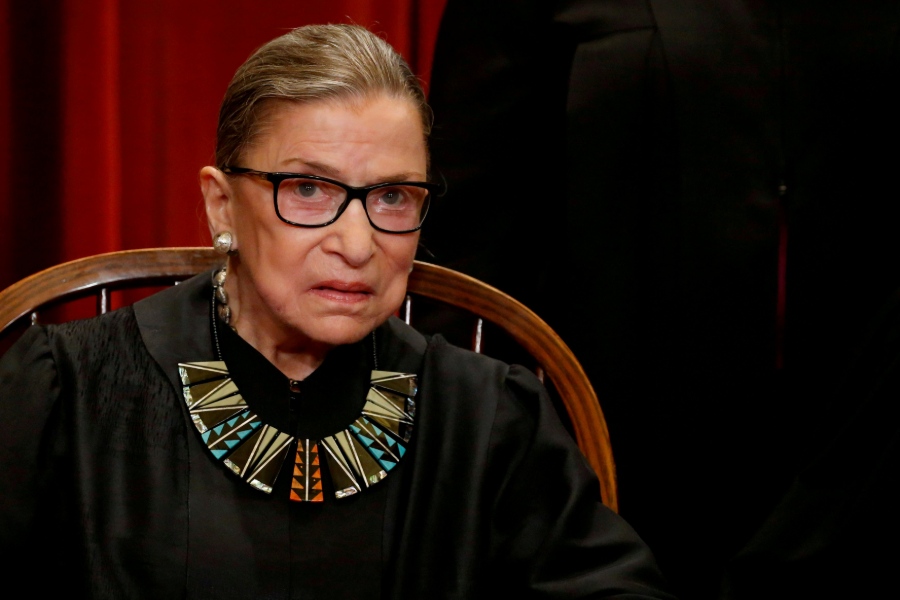
“Certainly, her approach to constitutional interpretation was markedly different from that of her close friend, the late Justice Antonin Scalia,” Garnett told CNS.
“She believed that justices could and should interpret the Constitution in accord with changing values and societal developments, and did not think that they should be closely constrained by history and tradition,” he said. Scalia was an originalist; he believed judges must hold the Constitution to the “public meaning” it had when it was adopted.
For his part, Father McCormick said he believes Ginsburg’s passing will accelerate dynamics already at work in the electoral process, and particularly with regard to the “Catholic vote,” which he believes exists in name only.
“The Trump campaign will assert his success at appointing conservative judges, while the Joe Biden campaign will continue to emphasize that other things should matter to Catholics besides abortion,” Father McCormick said. Biden, a Catholic himself, supports legalized abortion; he has said he is personally opposed to it but says he cannot impose his Catholic view on the electorate.
“Those campaign strategies will only further stimulate controversy about the efficacy of pro-life strategies that are primarily legal and oriented toward overturning Roe v. Wade,” the priest added.
Claire Osborn-Wright, a visiting associate professor of law at Miami’s St. Thomas University and a former academic from San Diego who knew Ginsburg personally, noted that “as Chief Justice John Roberts said at her (eulogy) service, she wrote well over 400 (majority, concurring, and dissenting) opinions — we have a common law system and courts are supposed to follow precedent and that is a lot of precedent left behind,” Osborn-Wright said.
As one of six clerks working in a special clerkship serving the appeals court for the D.C. Circuit from 1983 to 1984, Osborn-Wright was able to work closely with and be mentored by then-Judge Ginsburg.
The two continued their acquaintance over the years through law societies such as the American Law Institute and legal conferences, including the annual Ruth Bader Ginsburg Women and the Law Conference at the Thomas Jefferson School of Law in California.
“I last saw her in 2017 at one of those meetings,” Osborn-Wright said by telephone Sept. 24, adding that she would place the late justice at the ideological center of the D.C. Circuit. That court then included the late Antonin Scalia, the late Judge Robert Bork and Judge Kenneth Starr on the right, and the late Judges David L. Bazelon and J. Skelly Wright on the ideological left.
Osborn-Wright added that while then-Judge Ginsburg had been an activist and advocate for women’s rights before working as a judge, she put her past advocacy aside while serving on the bench.
In anti-death penalty and pro-immigrant opinions, Ginsburg sided with Catholic Church leaders, but she differed with them in her support for legalized abortion, same-sex marriage and the mandate that contraception be covered in all health insurance plans.
“She saw her role as a judge to interpret the law in front of her and not to advocate for any position or to write the law, which I — a newly minted law graduate who wanted to change the world — found a bit frustrating at times,” Osborn-Wright said. “I quickly learned that she was right.”
After her appointment to the U.S. Supreme Court, Ginsburg may have felt obligated to provide lengthier explanations of her dissenting opinions once the court began to trend toward the right, “but she still faithfully applied the law as she interpreted it to the facts of each case, without being result-oriented or imposing her personal views,” Osborn-Wright said.
The late justice also will be remembered for her work ethic and for being a stickler for an economy of punctuation and grammar in legal writing, insisting that wordy and redundant legalese not get in the way of understanding the law, Osborn-Wright added.
“No matter how early you came into the office, you could count on her being there first, and she always was the last to leave the office as well,” Osborn-Wright said.
“She was a terrific mentor for me as she was for many people. She came across as a very demanding mother. She always wanted you to try your best, as she did,” Osborn-Wright said.
Another Miami academic at St. Thomas University, Siegfried Wiessner, a constitutional law professor, noted Ginsburg was able to forge momentous consensus decisions in the areas of gender discrimination and parental rights.
Wiessner pointed to a 1996 case concerning an indigent mother’s parental rights and ability to adopt children being terminated due to the mother’s inability to pay court fees.
The Supreme Court decided in the petitioner’s favor and stated that in matters regarding parental rights, a court may not stop a party from appealing the case based on financial means.
“The importance of this decision lies not only in its rare acceptance of a positive right against the state in a constitutional document focusing on limiting governmental intrusion; it is grounded in the argument that family relationships are to be considered fundamental,” Wiessner told CNS.
That Ginsburg was able to forge such momentous consensus decisions, is largely seen as an outgrowth of her warm personality, her kindness and generosity, he added.
More Supreme Court news
Copyright © 2020 Catholic News Service/U.S. Conference of Catholic Bishops

